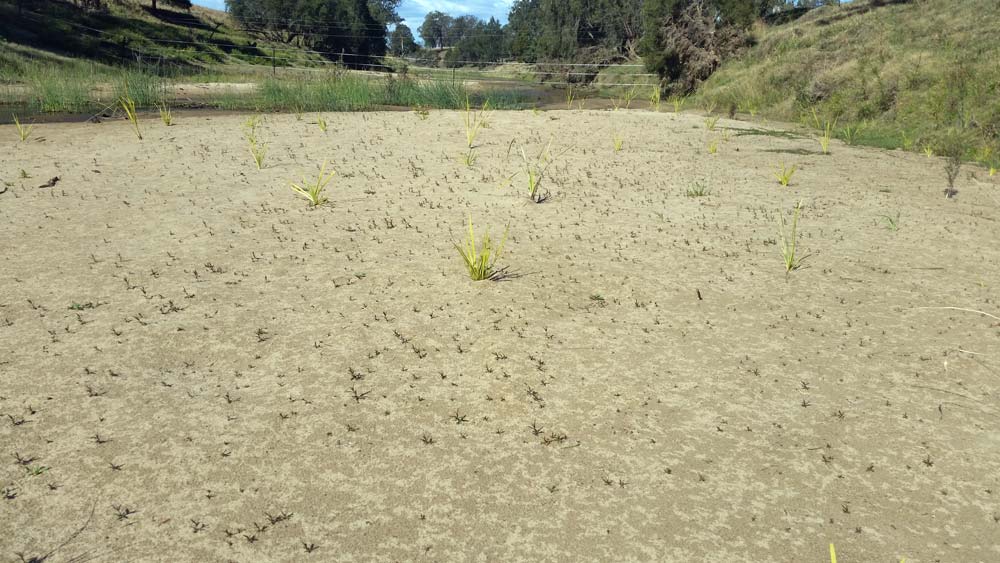
The two best methods of erosion control on land and along waterways is by vegetation and physical barriers. Utilising riparian trees or shrubs as erosion control measures can provide biodiversity, timber and non-timber products. Log jams and erecting retaining walls along creeks and river banks can provide physical protection against the force of the water.
Planting trees are often thought of as the first line of defence against erosion control, and their growth can be effective in preventing landslides and waterway erosion but is not always as useful for moderately sloping hills. It is important to have vegetation in the riparian zone and equally important is good pasture management and forest cover across the catchment to slow the runoff before it enters the waterway.
For planting in dry areas that are excessively irrigated and raised, we use fine mulch, fertiliser and the following species: Dianella caerulea, Pennisetum alopecuroides and Lomandra hystrix. For planting in dry raised or flat areas that are not excessively irrigated we prefer chunky mulch with zero fines and the following species: Dianella revolute or Lomandra Longifolia. Our plant stockist provides us with a Lomandra hybrid that increases the stability of the soil over 250% compared to the generic species.
Retaining Walls are growing ever more necessary to deal with rough terrain, steep slopes, and embankment reinforcement. To achieve faster results yet long term reprieve from erosion problems some of the following methods may be utilised:
- Log and rock bed control: A log retaining wall and rock cascade built across the bed of the creek to control an upstream-progressing erosion head. The log retaining wall is built across the full width of the creek bed and immediately downstream of the erosion head. Fill is placed upstream of the wall to the level of the upstream bed. The retaining wall holds the fill in place to control the progress of the erosion head and the rock cascade on the downstream side slows the flow and prevents downstream bed and bank erosion.
- Rock Chutes: A relatively short and steep section of creek bed armoured with rock to form a chute that transfers stream flow from a higher to a lower elevation without erosion.
- Boulder Plunge Pools: Large diameter rocks (boulders) are placed in the creek bed and up the banks to control an upstream progressing erosion head. The boulders are placed so they line the scour hole immediately downstream of the erosion head, providing a hard bed to control further progress of the erosion head. The boulders are placed so they pull the flow to the middle of the creek bed and away from the banks.
- Drop Structures: Stabilised, vertical or near-vertical structures usually consisting of concrete, rock, sheet piling or timber. Typical drop structures include log and rock cascades, log or timber V-weirs, rock chutes, grouted boulder chutes and vertical concrete steps. Sloping, non-stepped structures are generally preferred, even in minor streams, to avoid disturbing aquatic corridors (fish migration paths). Drop structures are built across the full width of the channel immediately downstream of a migrating erosion head.

